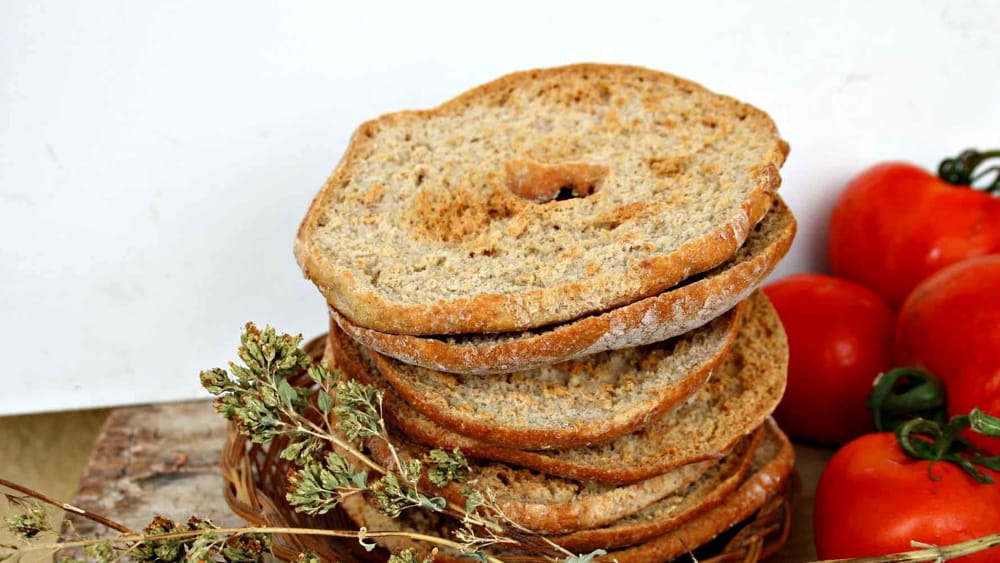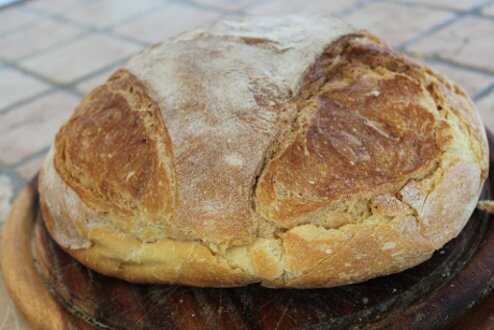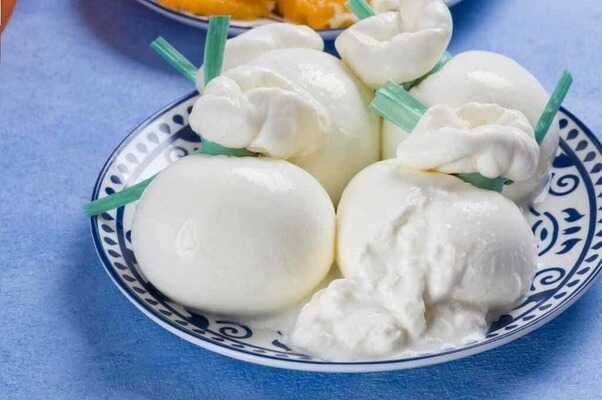Apulian extravirgin olive oil: excellence made in Puglia
Extravirgin olive oil is a true pride of the Apulian culinary tradition, well known in Italy and in the rest of the world. Puglia is the leading producer of extra virgin olive oil in Italy (it alone manages to produce around 60% of all national production). Four types of Apulian extra virgin olive oil have received the Protected Designation of Origin (DOP): Dauno, Colline di Brindisi, Terra d’Otranto and Terra di Bari.
But the green gold of Puglia has also been awarded many international recognitions and prestigious prizes such as the Silver Medal Award in Los Angeles or first place at the New York International Olive Oil Competition, both awarded in 2016 to the organic oil from Frantoio Raguso in Gravina in Puglia.

History of Apulian extravirgin olive oil
For centuries, all the activities relating to the production of extra virgin olive oil have been handed down from generation to generation to ensure a product of excellent quality. All phases follow precise schemes that lead to obtaining one of the best extra virgin olive oils in Italy.
- In the past, extra virgin olive oil was used not only as a food but also as a beauty product or as fuel for lamps. In Puglia it is probable that olive trees have been present since the Mesolithic, however initially its potential was not well understood. What is certain is that cultivation was introduced by the Greeks while the pressing and cultivation procedures can be attributed to the Romans.
- In subsequent eras, Puglia had already established itself as the largest producer of olive oil, so much so that it was necessary to find a way to best preserve it and protect it from the hands of dangerous foreigners. Thus, from 1200 until the mid-1700s, the old granaries of the Messapian age were replaced by underground oil mills, called underground oil mills.
- The arrival of the Byzantines in the 9th century, in fact, marked a change in trade direction, moving from that of grain to that of oil. The underground oil mills were nothing more than underground structures (dug from two to five meters below street level) which allowed the olives and oil to be processed and preserved in the best possible way since here the temperature remained more stable than outside where however, especially in summer, it could become too high and alter both the fruit and the oil obtained. These mills also responded to the need to make pressing the olives easier given the heat that could be generated here thanks to the lights or the breath of men and animals brought underground. Furthermore, the various processing phases of the trappitari (the workers) could be hidden from the prying eyes of possible enemies. In any case, even if the apogee oil mills are now abandoned, they represent an increasingly popular tourist attraction in Salento.
Many techniques and processing procedures have reached the present day and are still applied to the many olive trees. The olive tree manages to guarantee good production for several years, however it needs a lot of care especially in spring to ensure flowering and in summer to allow the olives to grow larger and the stone to harden. Only with good fertilization and the right amount of water will it be possible to obtain excellent extra virgin olive oil.
The production areas of Apulian extravirgin olive oil
Puglia has been divided into nine extr virgin olive oil production areas based on cultivation parameters. They take into consideration different territories and climatic conditions, the average number of plants per hectare, the varieties of olives, the harvesting methods, squeezing and processing and productivity. The types of Apulian extra virgin olive oil from the areas of Daunia, Terra di Bari, Brindisi and Terra d’Otranto have been awarded the Protected Designation of Origin (DOP).
In each of these areas an oil is produced with different characteristics given by the different olives from which it is obtained. Sweeter and fruitier, more intense or spicier or slightly bitter, typical of oil obtained from green and not yet fully ripe olives. In any case, these are extra virgin olive oils that can meet the different tastes of tasters’ palates.
DAUNIA
In particular, the first production area of Apulian extra virgin olive oil is that of Daunia. The types of olives from this area give the extra virgin olive oil produced a fruity and sweet taste. In particular:
- Daunia-Gargano is an oil produced from the Ogliarola olive with an aromatic scent and suitable for pairing with soups and legumes but also with appetizers.
- the Daunia-Sub Apennine and lower Tavoliere is made from the Coratina olive which gives it a bitter note making it perfect for seasoning bruschetta or salads.
- the Daunia alto Tavoliere is obtained from the Peranzana olive which enriches the oil with a floral scent that goes well with seafood dishes.
LAND OF BARI
The second production area is that of the Terra di Bari where there are three types of extra virgin olive oil.
- Castel del Monte (the area north of Bari), made from the Coratina olive, has a spicy and slightly bitter flavour. It can be used to enrich bruschetta, salads or boiled vegetables.
- Bitonto, produced with Cima di Bitonto and Ogliarola olives which give the oil a hint of almond and a more balanced flavor that lends itself well to accompanying grilled meat or roasts.
- Murgia dei Trulli e delle Grotte (south of Bari), obtained with the Cima di Mola olive, is the sweetest and used on raw dishes.
BRINDISI
The third production area is that of Brindisi province (Carovigno, Ceglie Messapica, Cisternino, Ostuni, San Vito dei Normanni, Sammichele Salentino, Villa Castelli and Fasano). Here, Colline extra virgin olive oil is produced, made with different olives. 30% Leccino, Coratina and Frantoio and 70% Ogliarola Barese which, overall, give the oil a sweet flavor making it perfect for seasoning fish or first dishes.
LAND OF OTRANTO
Finally, the Terra d’Otranto is another production area that includes municipalities in the province of Lecce and the province of Taranto. 3 types of extra virgin olive oil are produced here, all fruity and very aromatic, perfect for raw seasoning different foods or dishes.
- Terra d’Otranto (area south of Brindisi) is obtained with Collina di Nardò or Saracena and Ogliarola olives from Lecce or Salento.
- Terra d’Otranto (eastern Taranto area) is always made with Collina di Nardò or Saracena and Ogliarola olives from Lecce or Salento.
- Tarantine (western Taranto area) is produced from Leccino-Frantoio and Coratina olives.
Recipes with Apulian extravirgin olive oil
Even though extravirgin olive oil is often not the main ingredient of a dish, it contributes to giving flavor and delicacy to many dishes. There are some recipes that manage to enhance the flavor of this precious ingredient such as the typical bruschetta. Even the typical Apulian frisella, seasoned only with oregano, salt and extra virgin olive oil, becomes a tasty and satiating appetizer or aperitif.
Moving on to the first courses, the Pancotto, made with stale bread and seasoned with potatoes, turnip greens and tomatoes, all washed down with plenty of oil. Another first course that can be made starring Apulian extra virgin olive oil is spaghetti with garlic, oil and chilli pepper.
Perhaps not everyone knows that Apulian extravirgin olive oil is also widely used for sweet preparations as a substitute for butter or seed oil. It can be used to create genuine olive oil cakes or donuts because they are made only with flour, milk, sugar, eggs and oil. This ingredient alone can make the dessert lighter but at the same time tasty without the need to add cocoa, chocolate or cream.

Apulian Frisa: typical dish of the peasant tradition
Nowadays, frisella has become a delicious meal in all respects, perfect to be enjoyed during the summer with the native products of Puglia, during a lunch or directly on the beach during the hottest days.

Altamura Bread
A bread created and designed to meet the needs of shepherds and farmers for whom it was an essential and daily food. In fact, they sometimes had to stay away from home for several days, in the farms, the typical farms that stood and still stand in the countryside around the city.

Apulian burrata
This typical Apulian burrata cheese is produced throughout the year, following artisanal preparation methods, which make it one of the most significant examples of the dairy art of this southern region.
